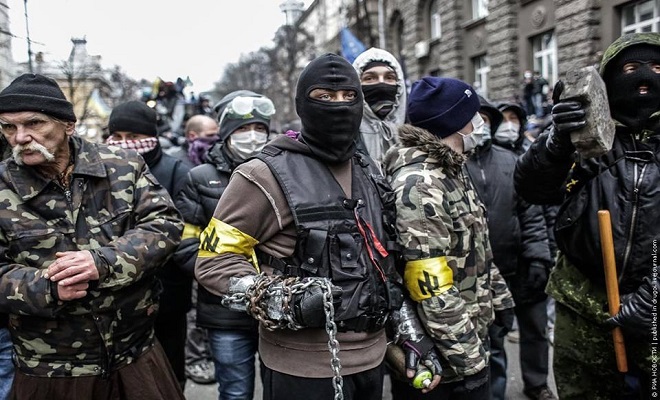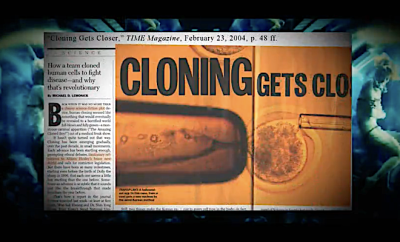 Global Research
Global Research
NWO
Secret History: The U.S. Supported and Inspired the Nazis
from Washington’s Blog.com:
Unless We Learn Our History, We’re Doomed to Repeat It
Preface: I am a patriotic American who loves my country. I was born here, and lived here my entire life.
So why do I frequently point out America’s warts? Because – as the Founding Fathers and Supreme Court judges have explained – we can only make America better if we honestly examine her shortcomings. After all:
“Dissent is the highest form of patriotism.”
Only when Americans can honestly look at our weaknesses can we become stronger. If we fail to do so, history will repeat …
While Americans rightly condemn the Nazis as monstrous people, we don’t know that America played both sides … both fighting and supporting the Nazis.
Americans also aren’t aware that the Nazis were – in part – inspired by anti-semites in America.
Backing Nazis
Large American banks – and George W. Bush’s grandfather – financed the Nazis.
American manufacturing companies were big supporters of the Nazis. here are 6 historical examples …
(1) IBM. CNET reports:
IBM has responded to questions about its relationship with the Nazis largely by characterizing the information as old news.
“The fact that Hollerith equipment manufactured by (IBM’s German unit) Dehomag was used by the Nazi administration has long been known and is not new information,” IBM representative Carol Makovich wrote in an e-mail interview. “This information was published in 1997 in the IEEE Annals of the History of Computing and in 1998 in Washington Jewish Week.”
***
IBM also defended Chairman Thomas Watson for his dealings with Hitler and his regime.
***
On September 13, 1939, The New York Times reports on Page 1 that 3 million Jews are going to be “immediately removed” from Poland, and they appear to be candidates for “physical extermination.” On September 9, the German managers of IBM Berlin send a letter to Thomas Watson with copy to staff in Geneva via phone that, due to the “situation,” they need high-speed alphabetizing equipment. IBM wanted no paper trail, so an oral agreement was made, passed from New York to Geneva to Berlin, and those alphabetizers were approved by Watson, personally, before the end of the month.
That month he also approved the opening of a new Europe-wide school for Hollerith technicians in Berlin. And at the same time he authorized a new German-based subsidiary in occupied Poland, with a printing plant across the street from the Warsaw Ghetto at 6 Rymarska Street. It produced some 15 million punch cards at that location, the major client of which was the railroad.
We have a similar example involving Romania in 1941, and The Sunday Times has actually placed the IBM documents up on their Web site…. When Nazi Germany went into France, IBM built two new factories to supply the Nazi war machine. This is the 1941-’42 era, in Vichy, France, which was technically neutral. When Germany invaded Holland in May 1940, IBM rushed a brand-new subsidiary into occupied Holland. And it even sent 132 million punch cards in 1941, mainly from New York, to support the Nazi activity there. Holland had the highest rate of Jewish extermination in all of Europe; 72 percent of Jews were killed in Holland, compared to 24 percent in France, where the machines did not operate successfully.
***
When Hitler came to power in 1933, his desire to destroy European Jewry was so ambitious an enterprise, it required the resources of a computer. But in 1933 no computer existed. What did exist was the Hollerith punch-card system. It was invented by a German-American in Buffalo, New York, for the Census Bureau. This punch-card system could store all the information about individuals, places, products, inventories, schedules, in the holes that were punched or not punched in columns and rows.
The Hollerith system reduced everything to number code. Over time, the IBM alphabetizers could convert this code to alphabetical information. IBM made constant improvements for their Nazi clients.
***
Our entry was of course precipitated by the bombing of Pearl Harbor on December 7. Shortly before that, with sudden new trading-with-the-enemy regulations in force–this is October 1941–Watson issued a cable to all IBM’s European subsidiaries, saying in effect: “Don’t tell us what you’re doing and don’t ask us any questions.” He didn’t say, “Don’t send machines into concentration camps.” He didn’t say, “Stop organizing the military forces of Nazi Germany.” He didn’t say, “Don’t undertake anything to harm innocent civilians.”
***
He then bifurcated the management of IBM Europe–one manager in Geneva, named Werner Lier, and the other one in New York, in his office, named J.L. Schotte. So all communications went from Switzerland to New York. Ultimately there was a Hollerith Department called Hollerith Abteilung–German for department–in almost every concentration camp. Remember, the original Auschwitz tattoo was an IBM number.
***
IBM put the blitz in blitzkrieg. The whole war effort was organized on Hollerith machines from 1933 to 1945. This is when information technology comes to warfare. At the same time, IBM was supporting the entire German war machine directly from New York until the fall of 1941 ….
***
IBM did more than just sell equipment. Watson and IBM controlled the unique technical magic of Hollerith machines. They controlled the monopoly on the cards and the technology. And they were the ones that had to custom-design even the paper forms and punch cards–they were custom-designed for each specific purpose. That included everything form counting Jews to confiscating bank accounts, to coordinating trains going into death camps, to the extermination by labor campaign.
That’s why even the paper forms in the prisoner camps had Hollerith notations and numbered fields checked. They were all punched in. For example, IBM had to agree with their Nazi counterparts that Code 6 in the concentration camps wasextermination. Code 1 was released, Code 2 was transferred, Code 3 was natural death,Code 4 was formal execution, Code 5 was suicide. Code 7 was escape. Code 6 wasextermination.
All of the money and all the machines from all these operations was claimed by IBM as legitimate business after the war. The company used its connections with the State Department and the Pentagon to recover all the machines and all the bank accounts. They never said, “We do not want this blood money.” They wanted it all.
(2) Standard Oil. The Nazi air force – the Luftwaffe – needed tetraethyl lead gas in order to get their planes off the ground. Standard Oil sold tetraethyl to the Nazis.
After WWII began, the English became angry about U.S. shipments of strategic materials to Nazi Germany. So Standard changed the registration of their entire fleet to Panamanian to avoid British search or seizure. These ships continued to carry oil to the Nazis.
(3) Ford. Ford made cars for the Nazis. Wikipedia notes:
Ford continued to do business with Nazi Germany, including the manufacture of war materiel. Beginning in 1940, with the requisitioning of between 100 and 200 French POWs to work as slave laborers, Ford-Werke contravened Article 31 of the 1929 Geneva Convention. At that time, which was before the U.S. entered the War and still had full diplomatic relations with Nazi Germany, Ford-Werke was under the control of the Ford Motor Company. The number of slave laborers grew as the war expanded ….
(And see discussion under GM, below.)
Wikipedia also points out that Henry Ford was one of the world’s biggest anti-semites … inspiring Hitler, Himmler and other high-level Nazis:
In Germany, Ford’s anti-Semitic articles from The Dearborn Independent were issued in four volumes, cumulatively titled The International Jew, the World’s Foremost Problem published by Theodor Fritsch, founder of several anti-Semitic parties and a member of the Reichstag. In a letter written in 1924, Heinrich Himmler described Ford as “one of our most valuable, important, and witty fighters.” Ford is the only American mentioned in Mein Kampf. Adolf Hitler wrote, “only a single great man, Ford, [who], to [the Jews’] fury, still maintains full independence…[from] the controlling masters of the producers in a nation of one hundred and twenty millions.” Speaking in 1931 to a Detroit News reporter, Hitler said he regarded Ford as his “inspiration,” explaining his reason for keeping Ford’s life-size portrait next to his desk. Steven Watts wrote that Hitler “revered” Ford, proclaiming that “I shall do my best to put his theories into practice in Germany,” and modeling the Volkswagen, the people’s car, on the Model T.
Grand Cross of the German Eagle, an award bestowed on Ford by Nazi Germany***
James D. Mooney, vice-president of overseas operations for General Motors, received a similar medal, the Merit Cross of the German Eagle, First Class.
***
Testifying at Nuremberg, convicted Hitler Youth leader Baldur von Schirach who, in his role as military governor of Vienna deported 65,000 Jews to camps in Poland, stated,
The decisive anti-Semitic book I was reading and the book that influenced my comrades was … that book by Henry Ford, “The International Jew.” I read it and became anti-Semitic. The book made a great influence on myself and my friends because we saw in Henry Ford the representative of success and also the representative of a progressive social policy.
(4) GM. The Washington Post reports:
“General Motors was far more important to the Nazi war machine than Switzerland,” said Bradford Snell, who has spent two decades researching a history of the world’s largest automaker. “Switzerland was just a repository of looted funds. GM was an integral part of the German war effort. The Nazis could have invaded Poland and Russia without Switzerland. They could not have done so without GM.”
Both General Motors and Ford insist that they bear little or no responsibility for the operations of their German subsidiaries, which controlled 70 percent of the German car market at the outbreak of war in 1939 and rapidly retooled themselves to become suppliers of war materiel to the German army.
But documents discovered in German and American archives show a much more complicated picture. In certain instances, American managers of both GM and Ford went along with the conversion of their German plants to military production at a time when U.S. government documents show they were still resisting calls by the Roosevelt administration to step up military production in their plants at home.
***
When American GIs invaded Europe in June 1944, they did so in jeeps, trucks and tanks manufactured by the Big Three motor companies in one of the largest crash militarization programs ever undertaken. It came as an unpleasant surprise to discover that the enemy was also driving trucks manufactured by Ford and Opel — a 100 percent GM-owned subsidiary — and flying Opel-built warplanes ….
***
The relationship of Ford and GM to the Nazi regime goes back to the 1920s and 1930s, when the American car companies competed against each other for access to the lucrative German market.
***
In 1935, GM agreed to build a new plant near Berlin to produce the aptly named “Blitz” truck, which would later be used by the German army for its blitzkreig attacks on Poland, France and the Soviet Union. German Ford was the second-largest producer of trucks for the German army after GM/Opel, according to U.S. Army reports.
The importance of the American automakers went beyond making trucks for the German army. The Schneider report, now available to researchers at the National Archives, states that American Ford agreed to a complicated barter deal that gave the Reich increased access to large quantities of strategic raw materials, notably rubber. Author Snell says that Nazi armaments chief Albert Speer told him in 1977 that Hitler “would never have considered invading Poland” without synthetic fuel technology provided by General Motors.
As war approached, it became increasingly difficult for U.S. corporations like GM and Ford to operate in Germany without cooperating closely with the Nazi rearmament effort. Under intense pressure from Berlin, both companies took pains to make their subsidiaries appear as “German” as possible. In April 1939, for example, German Ford made a personal present to Hitler of 35,000 Reichsmarks in honor of his 50th birthday, according to a captured Nazi document.
Documents show that the parent companies followed a conscious strategy of continuing to do business with the Nazi regime, rather than divest themselves of their German assets.Less than three weeks after the Nazi occupation of Czechoslovakia in March 1939, GM Chairman Alfred P. Sloan defended this strategy as sound business practice, given the fact that the company’s German operations were “highly profitable.”
***
After the outbreak of war in September 1939, General Motors and Ford became crucial to the German military, according to contemporaneous German documents and postwar investigations by the U.S. Army. James Mooney, the GM director in charge of overseas operations, had discussions with Hitler in Berlin two weeks after the German invasion of Poland.
Typewritten notes by Mooney show that he was involved in the partial conversion of the principal GM automobile plant at Russelsheim to production of engines and other parts for the Junker “Wunderbomber,” a key weapon in the German air force, under a government-brokered contract between Opel and the Junker airplane company. Mooney’s notes show that he returned to Germany the following February for further discussions with Luftwaffe commander Hermann Goering and a personal inspection of the Russelsheim plant.
Mooney’s involvement in the conversion of the Russelsheim plant undermines claims by General Motors that the American branch of the company had nothing to do with the Nazi rearmament effort.
***
At GM and Ford plants in Germany, reliance on forced labor [from concentration camp inmates] increased.
***
In a court submission, American Ford acknowledges that Iwanowa and others were“forced to endure a sad and terrible experience” at its Cologne plant ….
Ford has backed away from its initial claim that it did not profit in any way from forced labor at its Cologne plant.
***
Mel Weiss, an American attorney for Iwanowa, argues that American Ford received “indirect” profits from forced labor at its Cologne plant because of the overall increase in the value of German operations during the war. He notes that Ford was eager to demand compensation from the U.S. government after the war for “losses” due to bomb damage to its German plants and therefore should also be responsible for any benefits derived from forced labor.
Similar arguments apply to General Motors, which was paid $32 million by the U.S. government for damages sustained to its German plants.
(5) Kodak. During World War Two, Kodak’s German branch also used slave laborers from concentration camps. Several of their other European branches did heavy business with the Nazi government.
And Wilhelm Keppler – one of Hitler’s top economic advisers – had deep ties in Kodak. When Nazism began, Keppler advised Kodak and several other U.S. companies that they’d benefit by firing all of their Jewish employees.
(6) Coca Cola. Coke made soda for the Nazis. Fanta was specifically invented for Nazi-era Germans.
Leading American financiers Rockefeller, Carnegie and Harriman also funded Nazi eugenics programs.
And the U.S. government actively backed the Nazis in Ukraine 70 years ago.
Inspired By America
As noted above, Hitler and his top henchmen were inspired by Henry Ford’s writings.
According to the San Francisco Chronicle, the idea of killing Jews, communists and gypsies in gas chambers originated in the U.S. … not Germany.
And Nazis were also apparently inspired by America’s treatment of Native Americans. Specifically, retired Major in the U.S. Army Judge Advocate General Corps, Todd E. Pierce – who researched and reviewed the complete records of military commissions held during the Civil War and stored at the National Archives in Washington, D.C. as part of his assignment in the Office of Chief Defense Counsel, Office of Military Commissions – notes:
Stories of the American conquest of Native Americans with its solution of placing them on reservations were particularly popular in Germany early in the Twentieth Century including with Adolf Hitler.
Finally, the Nazis copied American propaganda techniques.
Postscript: After WWII, America imported and protected many high-level Nazi scientists and spies, and put them into prominent positions within the U.S.
And many allege that we’re supporting neo-Nazis in Ukraine.
Read More @ Washington’s Blog.com












